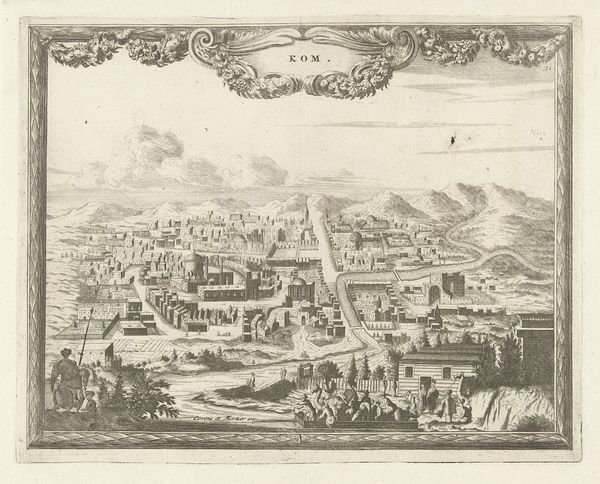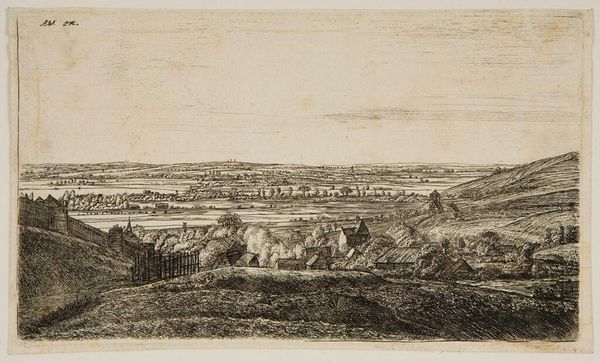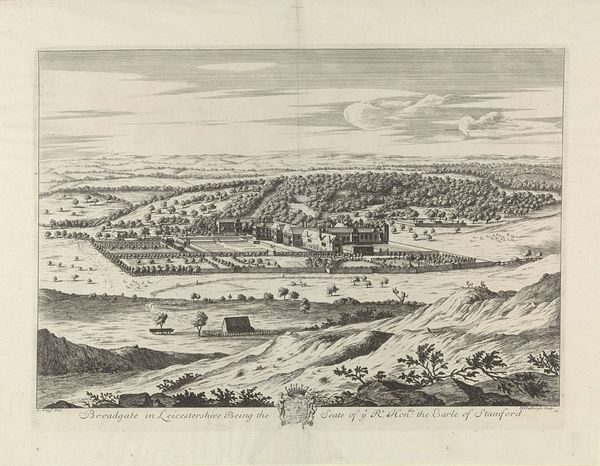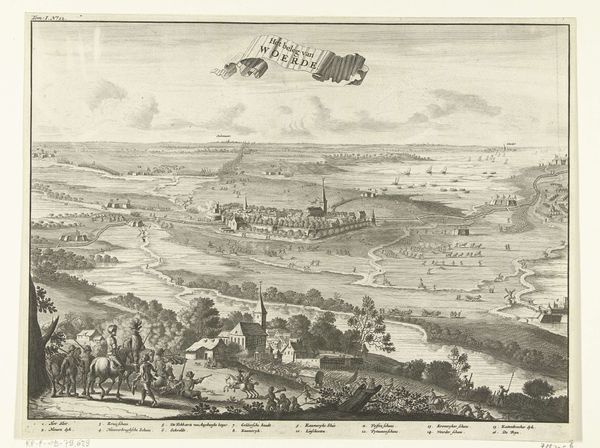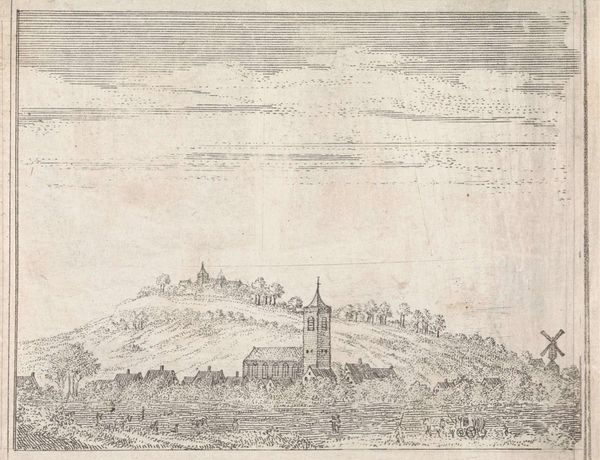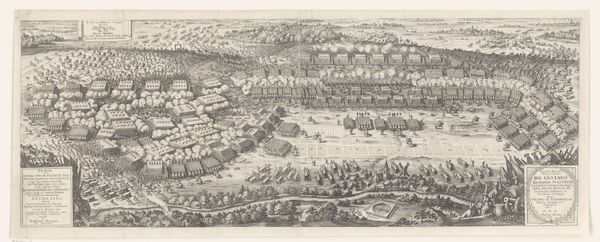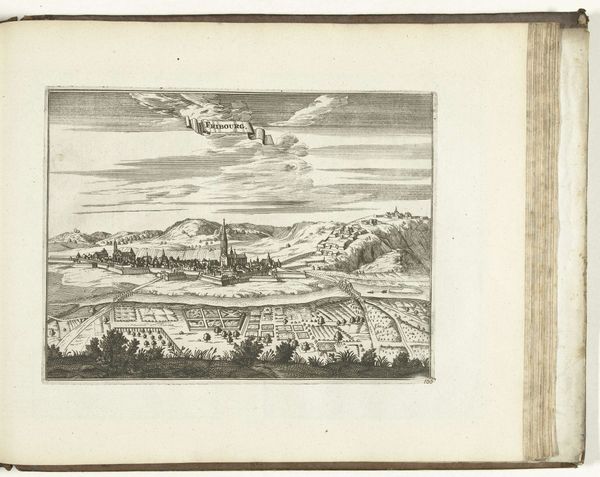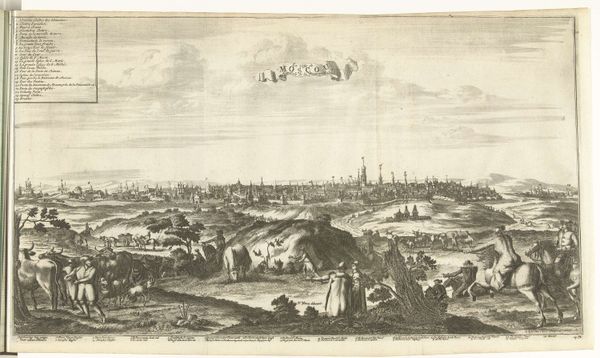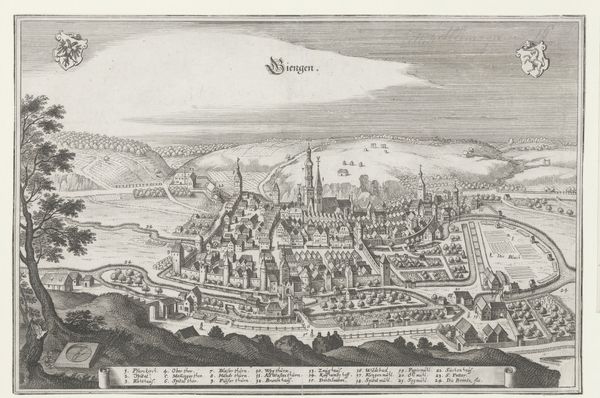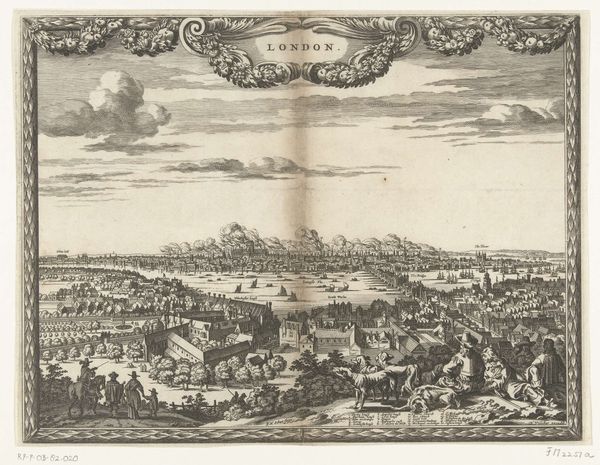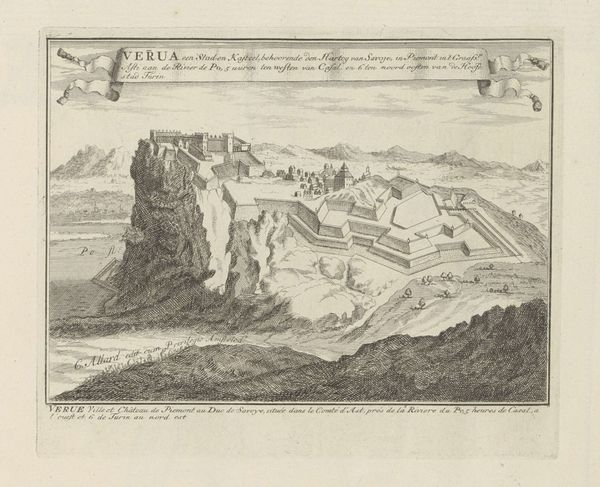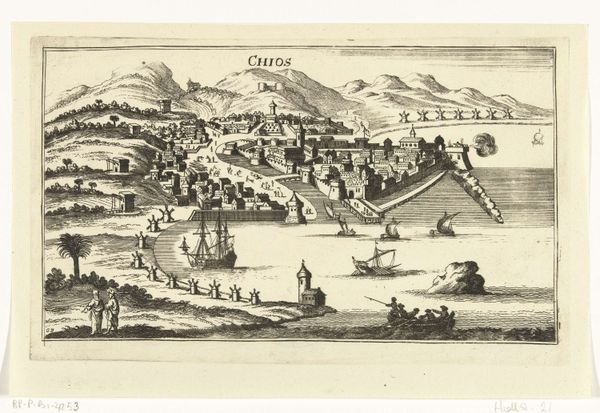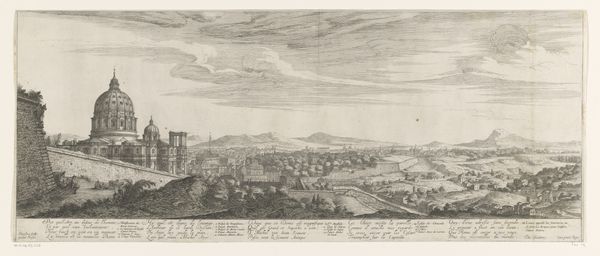
print, etching, engraving
#
baroque
# print
#
pen sketch
#
etching
#
old engraving style
#
landscape
#
cityscape
#
engraving
#
realism
Dimensions: height 201 mm, width 265 mm
Copyright: Rijks Museum: Open Domain
Curator: What a find. This etching, "Gezicht op Fribourg," dating from around 1702, offers a glimpse into the early 18th century through the eyes of an anonymous artist. Preserved here at the Rijksmuseum, its baroque landscape elements strike a delicate balance between realism and stylized representation. Editor: The detail is captivating; though starkly monochrome, it's remarkably tranquil. The artist seems intent on meticulously recording every brick, blade of grass, and topographical nuance, creating a fascinating dialogue between the man-made and natural world. But that scroll at the top—bit theatrical, don't you think? Curator: It's characteristic of the period; imbuing even cartographic depictions with an element of the grandiose was a popular conceit. However, that flourish offers a strategic entry point, leading your eye from the title to the landscape below. Note how the city is rendered, walled and fortified; these visual cues tell us a great deal about the socio-political climate. Fribourg would have been highly concerned with defense, visibility, and civic pride. Editor: Yes, I see your point. But the way those manicured gardens sit right in the foreground also tells a story. Such spaces, likely the pleasure gardens of the wealthy elite, draw a stark distinction between those inside and outside the city walls. In essence, it acts as a subtle commentary on class and power, subtly embedding hierarchies within the scenery. Curator: Exactly. And the print medium itself expands access, reproducing and disseminating particular views that could affect perceptions of places and reinforce certain social narratives beyond the confines of Fribourg itself. Editor: Seeing it that way underscores how something as seemingly benign as a landscape view is never just neutral topography. It's so telling, this meticulous detail alongside blatant, idealized staging. It encourages me to wonder what other stories might remain unseen and unacknowledged. Curator: Ultimately, exploring art like this helps us interrogate the structures of society through the images society perpetuates about itself. Editor: Yes. And reminds us that, perhaps, the truest reflection often resides in what's deliberately left unsaid or, in this instance, un-etched.
Comments
No comments
Be the first to comment and join the conversation on the ultimate creative platform.
